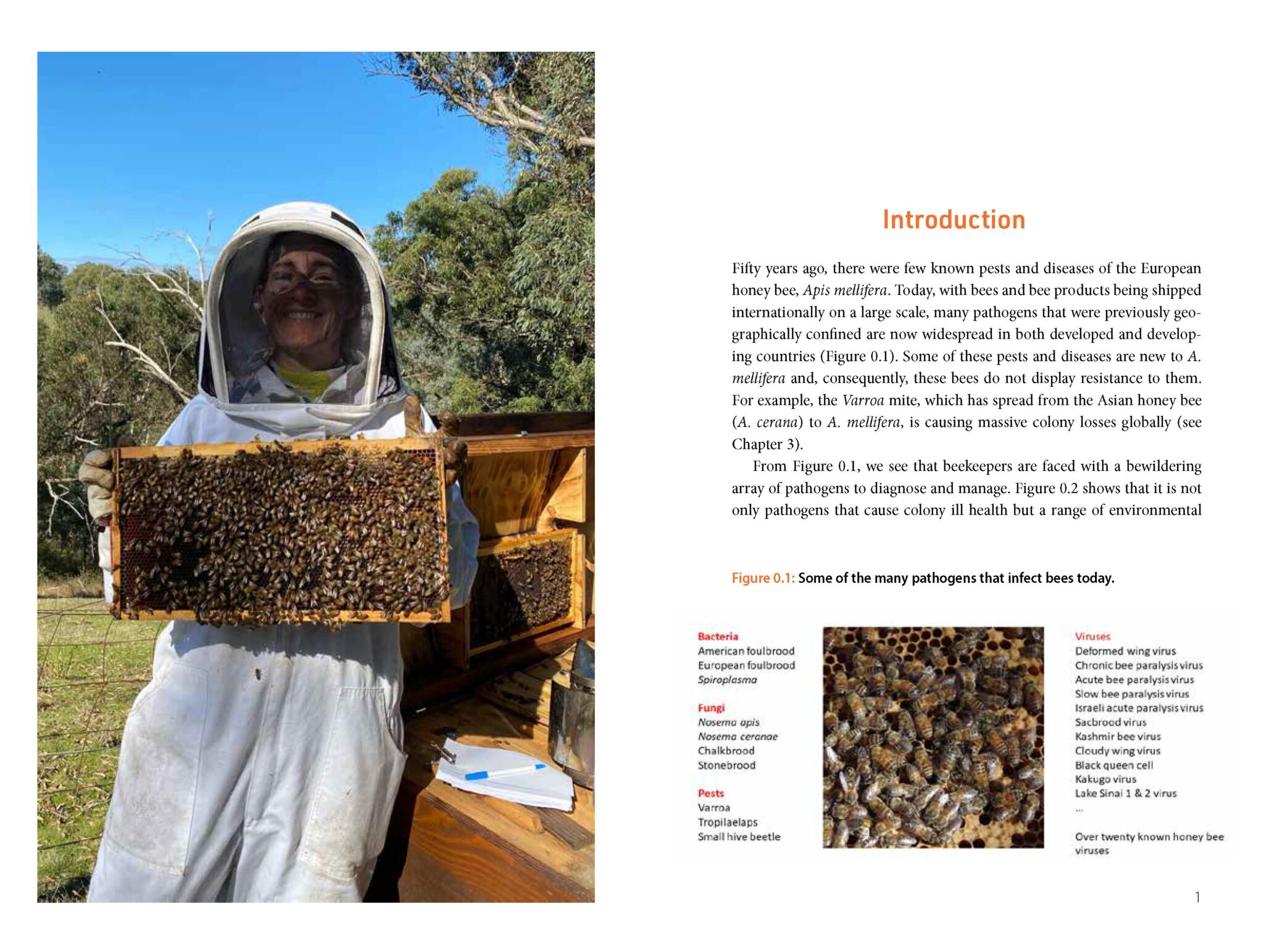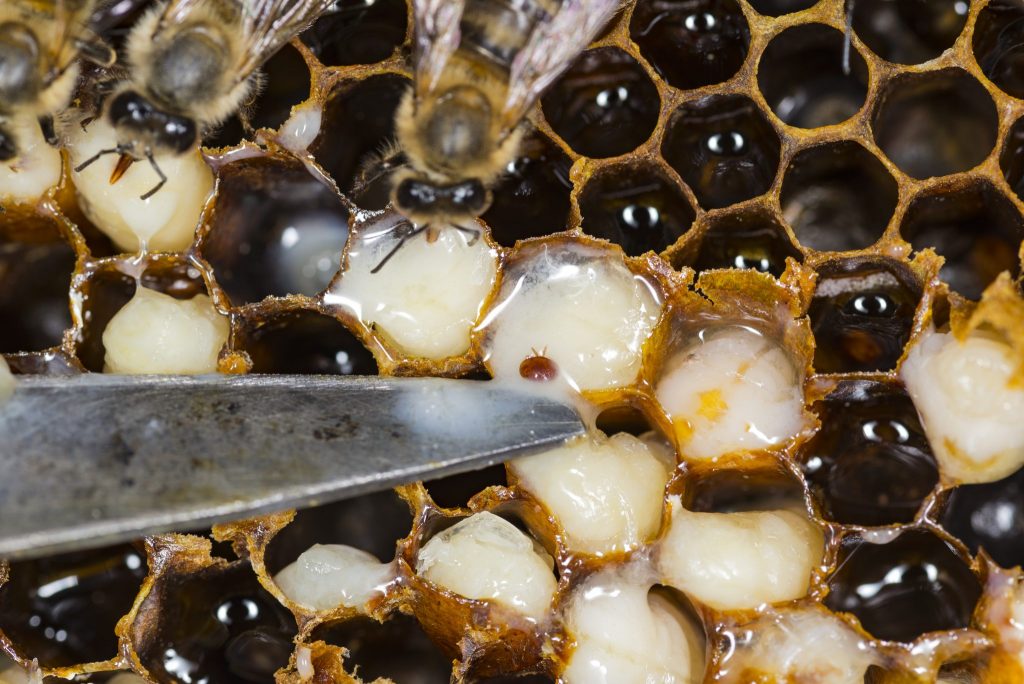How the Cloudy Wing Virus Affects Honey Bees: Threats & Solutions
The Cloudy Wing Virus (CWV) poses a significant threat to honey bees. This virus affects bee health and colony survival.
Honey bees play a crucial role in pollination and agriculture. They help plants grow and produce food. The Cloudy Wing Virus weakens bees, making them vulnerable. Infected bees show cloudy wings, reduced flight ability, and shorter lifespans. This impacts the entire colony.
Understanding CWV is vital for protecting honey bee populations. This virus can spread quickly and devastate hives. Beekeepers and researchers are working to find solutions. Learning about CWV can help save bees and ensure food security. Stay with us to explore how CWV affects honey bees and what can be done to combat it.
Introduction To Cloudy Wing Virus
Honey bees play a vital role in pollination. They help in the growth of many crops. Yet, these tiny creatures face many threats. One such threat is the Cloudy Wing Virus. This virus impacts their health. It also affects their ability to pollinate.
Understanding this virus is crucial. It helps us protect honey bees. In this post, we will explore what the Cloudy Wing Virus is. We will also look into its history and discovery.
What Is Cloudy Wing Virus?
The Cloudy Wing Virus, or CWV, is a harmful virus. It affects honey bees’ wings. Infected bees have cloudy, translucent wings. This makes it hard for them to fly. The virus can weaken entire colonies. It can lead to a drop in bee numbers.
Symptoms include reduced flying ability. Bees may also show sluggish behavior. The virus spreads easily in crowded colonies. It poses a serious threat to bee health.
History And Discovery
The Cloudy Wing Virus was first identified in the 1970s. Scientists noticed unusual symptoms in bees. These included cloudy wings and poor flight. Research soon linked these symptoms to a virus.
Over the years, studies have increased. Scientists learned more about how CWV spreads. They also discovered its impact on bee colonies. Today, the virus is recognized globally. It is one of many threats to honey bee health.

Credit: exislepublishing.com
Symptoms In Honey Bees
Honey bees play a vital role in our ecosystem. Yet, they are often threatened by various diseases. One such disease is the Cloudy Wing Virus (CWV). This virus affects their health and productivity. Recognizing its symptoms helps beekeepers protect their hives.
Physical Symptoms
Bees infected with the Cloudy Wing Virus show noticeable physical changes. Their wings appear cloudy or opaque. This is one of the most distinct signs. Infected bees may also have deformed wings. Their bodies might look bloated or swollen. These physical symptoms make it hard for bees to fly. They become less efficient at pollinating flowers and gathering nectar.
Behavioral Changes
Cloudy Wing Virus also causes behavioral changes in honey bees. Infected bees often act sluggish. They may seem disoriented or confused. These bees might wander away from the hive. They tend to gather less food, affecting the colony’s survival. Their reduced activity and productivity harm the entire hive.
Understanding these symptoms is crucial for beekeepers. Early detection can save hives from severe damage. By keeping a close watch on their bees, beekeepers can take timely action.
Transmission Methods
Honey bees are vital to our ecosystem. The Cloudy Wing Virus (CWV) poses a significant threat to their health. Understanding how this virus spreads helps protect these important pollinators.
Direct Transmission
Direct transmission occurs through close contact between bees. Infected bees pass the virus through saliva during feeding. They also spread it during hive cleaning activities. This direct contact facilitates rapid virus spread within colonies.
Indirect Transmission
Indirect transmission involves the virus spreading without direct contact. Contaminated surfaces, such as hive tools, can harbor the virus. Bees coming into contact with these surfaces may become infected. Infected bees can also leave the virus on flowers. Healthy bees visiting these flowers can then contract the virus.

Credit: www.facebook.com
Impact On Bee Colonies
The Cloudy Wing Virus (CWV) poses a serious threat to bee colonies. This virus affects the health and productivity of honey bees. Understanding its impact is crucial for beekeepers and farmers.
Colony Collapse Disorder
Colony Collapse Disorder (CCD) occurs when most worker bees abandon the hive. CWV contributes to this disorder. Infected bees become weak and cannot fly properly. This leads to a decline in bee numbers. The queen bee and young bees are left behind. The hive cannot sustain itself without worker bees. Beekeepers often find empty hives with few or no bees.
Reduced Pollination
Honey bees play a vital role in pollination. CWV-infected bees cannot perform this task effectively. Their weakened state reduces their ability to collect pollen. Reduced pollination affects crop yields and plant diversity. Farmers rely on healthy bees for successful harvests. The decline in bee health due to CWV impacts food production. Ensuring the health of bee colonies is essential for agriculture.
Environmental Factors
Environmental factors play a significant role in the spread of the Cloudy Wing Virus among honey bees. These factors can either increase or decrease the susceptibility of bee colonies to the virus. By understanding these environmental influences, beekeepers can take better measures to protect their hives.
Climate Influence
Climate has a direct impact on the health of honey bees. Warmer temperatures can lead to the rapid spread of the Cloudy Wing Virus. Bees are more active in warmer weather, which increases their chances of coming into contact with infected bees.
On the other hand, colder climates can weaken bee colonies. Weak bees are more susceptible to infections, including the Cloudy Wing Virus. Thus, extreme temperatures, whether hot or cold, can negatively affect bee health.
Habitat Loss
Habitat loss is another critical factor. When bees lose their natural habitats, they are forced into smaller, overcrowded areas. This increases the likelihood of disease spread, including the Cloudy Wing Virus.
Loss of diverse flora also impacts bee health. Bees rely on a variety of plants for nutrition. A lack of diverse food sources can weaken their immune systems, making them more vulnerable to viruses.
Finally, urbanization leads to increased use of pesticides. Pesticides can weaken bees, making them more prone to infections.
| Environmental Factor | Impact on Bees |
|---|---|
| Climate Change | Increased virus spread and weakened colonies |
| Habitat Loss | Overcrowding and reduced immune health |
| Pesticide Use | Weakened immunity and increased vulnerability |
Understanding these environmental factors is essential for protecting honey bees from the Cloudy Wing Virus. By addressing climate influence and habitat loss, beekeepers can help maintain healthier bee colonies.
Current Threats
The Cloudy Wing Virus poses a significant threat to honey bees. Understanding the other dangers they face is essential. Here, we discuss the primary threats.
Pesticides
Pesticides are harmful to honey bees. These chemicals are used to protect crops from pests. Unfortunately, they also affect bees. Exposure to pesticides can weaken their immune systems. This makes them more susceptible to viruses like the Cloudy Wing Virus.
Pesticides can contaminate the nectar and pollen bees collect. This contamination can disrupt their foraging behavior. It can also impair their ability to navigate back to the hive.
Varroa Mite Infestations
Varroa mites are another critical threat to honey bees. These parasites attach to the bees’ bodies. They feed on their blood, weakening them. This can lead to the spread of viruses, including the Cloudy Wing Virus.
Varroa mites can also reproduce within the hive. This leads to large infestations. These infestations can severely impact the bee colony. The weakened bees struggle to survive, making them more vulnerable to other threats.
| Threat | Impact on Bees |
|---|---|
| Pesticides | Weakens immune system, affects foraging and navigation |
| Varroa Mite Infestations | Weakens bees, spreads viruses, leads to large infestations |
Preventative Measures
Effective preventative measures are crucial in combating the Cloudy Wing Virus in honey bee colonies. By implementing the right strategies, beekeepers can safeguard their hives and ensure the health and productivity of their bees. The following measures outline essential practices for preventing this virus.
Hygiene Practices
Maintaining good hygiene practices is vital for preventing the spread of the Cloudy Wing Virus. Beekeepers should regularly clean and disinfect their equipment. This helps to remove any viral particles that may be present.
- Use a 10% bleach solution to disinfect tools.
- Clean hive boxes and frames with hot water.
- Replace old combs with new ones every few years.
Proper disposal of dead bees and infected materials is also important. Burn or bury them away from the apiary to prevent contamination.
Breeding Resistant Bees
Another effective measure is breeding resistant bees. By selecting and breeding bees that show resistance to the virus, beekeepers can develop stronger colonies over time.
- Identify and select queens from healthy, productive hives.
- Breed these queens with drones from other resistant colonies.
- Monitor the new colonies for signs of resistance and health.
Collaborate with local beekeeping associations to share and exchange resistant stock. This helps to improve the overall health and resilience of bee populations in the area.
Future Solutions
Finding future solutions to combat the Cloudy Wing Virus (CWV) in honey bees is crucial. Scientists and policymakers are actively working to address this issue. Progress in these areas can help protect our vital pollinators.
Scientific Research
Researchers are exploring various aspects of the Cloudy Wing Virus. They study how it spreads and affects bee colonies. Understanding these factors can lead to effective treatments. Scientists are also developing new antiviral drugs. These drugs aim to boost the bees’ immune systems. They may help bees resist CWV infections more effectively.
Another focus is on breeding virus-resistant bees. Selective breeding can produce bees that naturally resist CWV. This approach has shown promise in preliminary studies. Researchers are also examining natural remedies. Some plants have antiviral properties that could benefit bees. These natural solutions might offer a sustainable way to manage CWV.
Policy Changes
Policy changes play a vital role in protecting bees from CWV. Governments can implement regulations to reduce the spread of the virus. For instance, they can control the movement of bee colonies. This measure can limit the spread of infected bees to new areas.
Policies can also support research funding. More funding allows scientists to continue their work on CWV. It enables them to develop and test new solutions. Education programs for beekeepers are another important policy area. Educating beekeepers about CWV can help them take preventive measures. They can learn how to spot early signs of infection. Early detection can prevent the virus from spreading further.
International cooperation is also key. CWV is a global issue, and countries must work together. Sharing research and resources can lead to faster solutions. Collaborative efforts can create a united front against the virus.

Credit: beekeepclub.com
Frequently Asked Questions
What Is Cloudy Wing Virus?
Cloudy Wing Virus (CWV) is a viral infection affecting honey bees. It causes their wings to appear cloudy and impacts their ability to fly.
How Does Cwv Spread Among Bees?
CWV spreads through direct contact between bees and contaminated food. It can also be transmitted by parasitic mites.
What Are The Symptoms Of Cwv In Bees?
Symptoms include cloudy wings, trembling, and reduced flight ability. Infected bees may also show decreased foraging activity.
Can Cwv Be Treated In Honey Bees?
Currently, there is no specific treatment for CWV. Beekeepers focus on prevention and maintaining strong, healthy colonies.
Conclusion
Cloudy Wing Virus poses a serious threat to honey bees. It weakens colonies and disrupts pollination. Protecting bees requires constant vigilance. Farmers and beekeepers must stay informed. Implementing preventive measures can help. Healthy bees ensure healthy crops. Working together, we can safeguard these vital pollinators.



